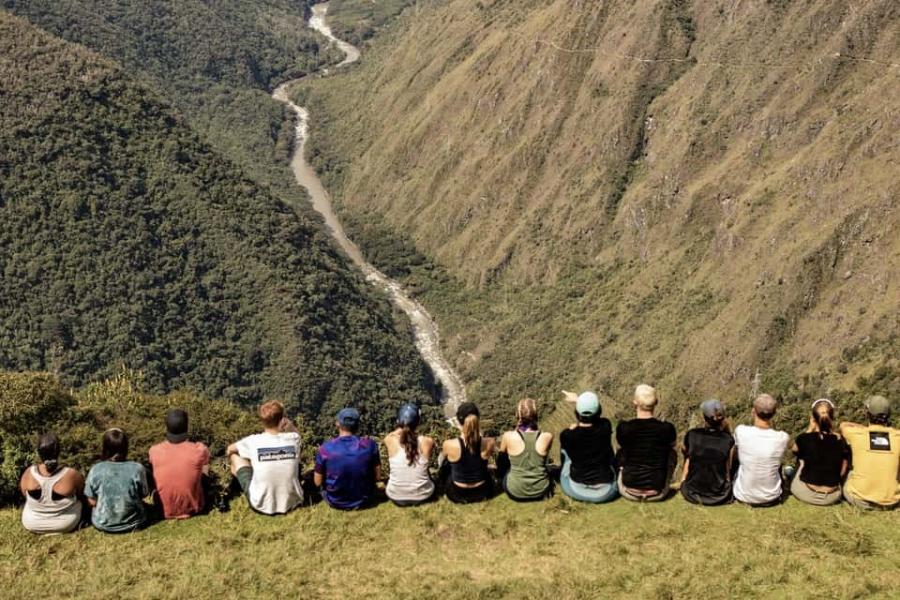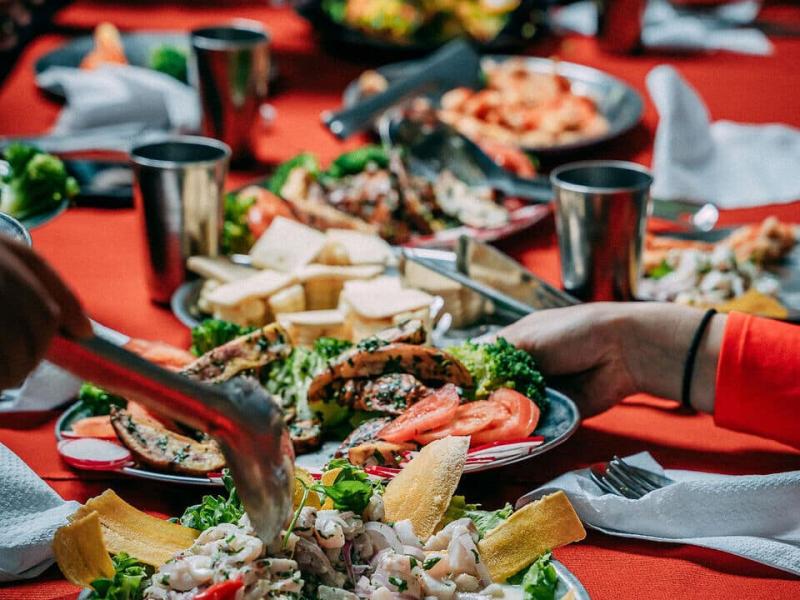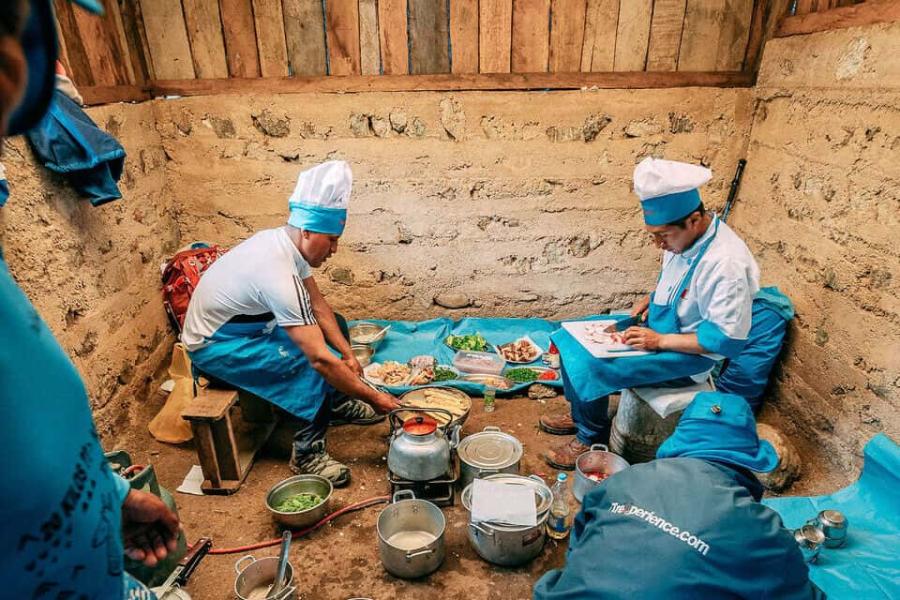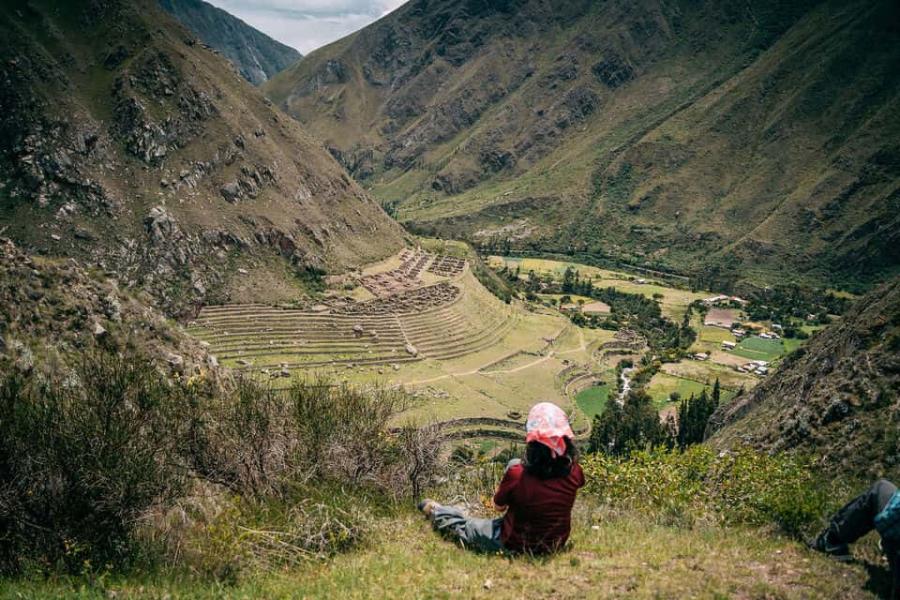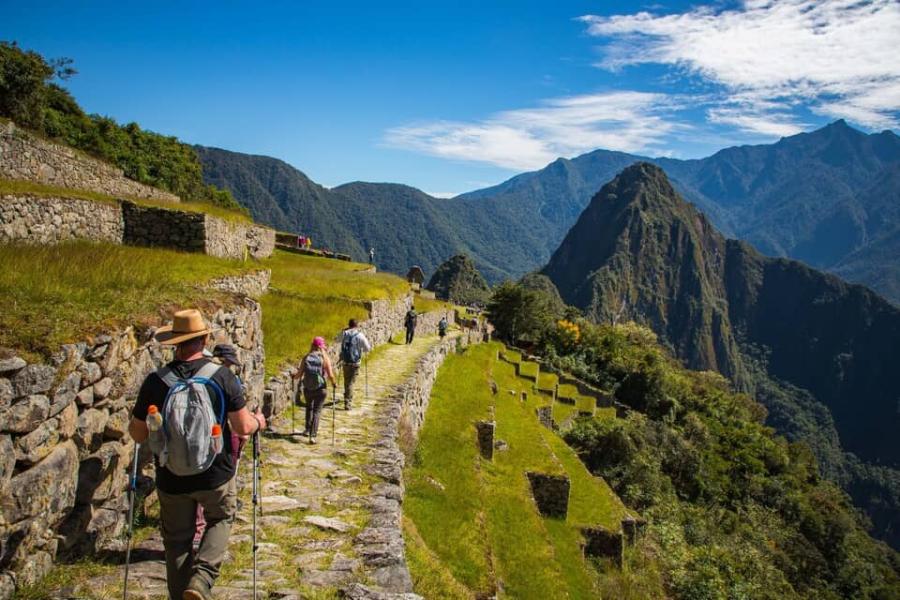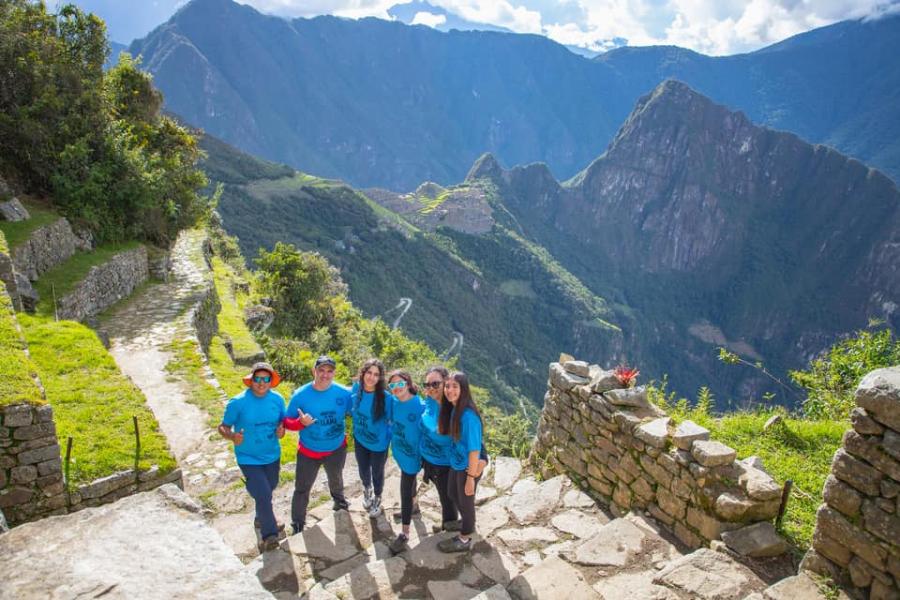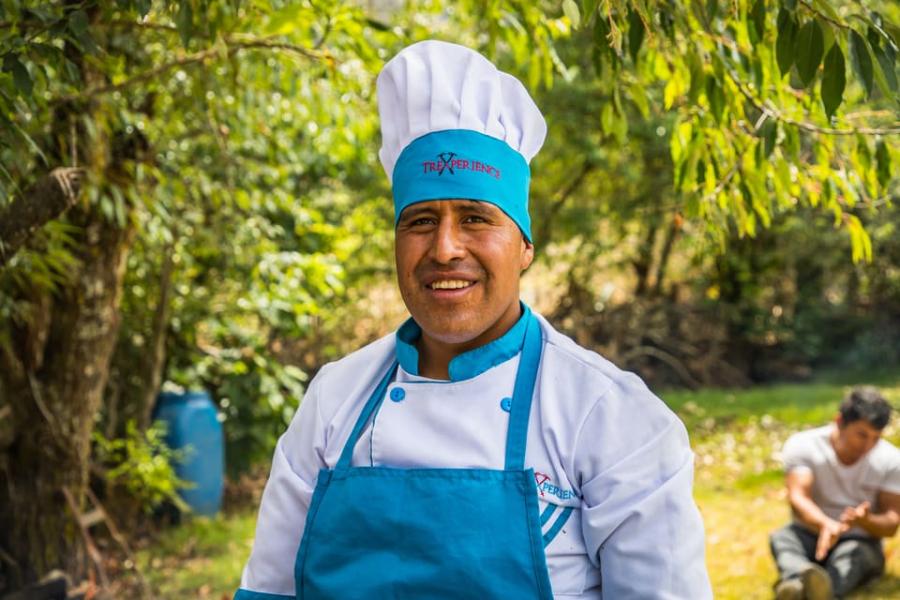Experience the Private Inca Trail to Machu Picchu with an exclusive trekking team. This renowned hike offers stunning views and ancient Inca ruins. Your expert guide ensures safety, shares insights, and tailors the experience to your interests.
The highlight of your trek will be reaching the Sun Gate, where you'll catch your first breathtaking glimpse of Machu Picchu. Your guide will then take you on an in-depth tour of this magnificent archaeological site, revealing its mysteries and marvels.
Overview
Explore the Inca Trail: A 4-Day Private Machu Picchu Adventure
Embark on the adventure of a lifetime with the Private Inca Trail trek to Machu Picchu 4 days 3 nights. This exclusive journey combines breathtaking scenery, ancient Inca ruins, and unparalleled comfort. Guided by a dedicated local tour guides, you'll explore the lush cloud forests, high mountain passes, and historic sites that define this legendary trail.
Each step brings you closer to the breathtaking Sun Gate and the majestic Machu Picchu, ensuring a unique and unforgettable experience tailored just for you.
Highlights:
- Hike the Inca Trail with a private team
- Stay in the best and less crowded campsites
- Arrive at Machu Picchu through the Sungate
- Return on the Panoramic Vistadome Trains
Day-by-Day Summary
Day 1: Cusco – Km 82 – Llactapata – Ayapata
- Morning: Pickup at 4:30 am, drive to Ollantaytambo for breakfast and continue to Km 82 to start the trek.
- Midday: Hike 4 hours through beautiful streams and villages, lunch at Hatunchaca village.
- Afternoon: Hike 2 hours to Ayapata campsite. Enjoy tea time and dinner.
Day 2: Ayapata – Warmiwañusca – Runkuraqay – Chaquicocha
- Morning: Early wake-up, hike 4 hours to Warmiwañusca (Dead Woman’s Pass) at 4,215 m.
- Midday: Descend 2 hours to Pacaymayu Valley for lunch.
- Afternoon: Climb 2 hours to Runkuraqay Pass, continue to Chaquicocha campsite.
Day 3: Chaquicocha – Phuyupatamarca – Wiñaywayna
- Morning: Hike 2 hours to Phuyupatamarca with amazing views
- Midday: Descend to Intipata and lunch spot.
- Afternoon: Free time at Wiñaywayna to explore and relax.
Day 4: Wiñaywayna – Machu Picchu
- Early Morning: Wake up at 4:00 am, hike to the Sun Gate for sunrise at Machu Picchu.
- Morning: Guided tour of Machu Picchu.
- Afternoon: Bus to Aguas Calientes, train to Ollantaytambo, return to Cusco by van. Arrive around 7:30 pm.
You will be picked up from your hotel in Cusco at 4:30 a.m. and driven to Km 82 to start one of the world's most beautiful hikes. The first day is a 6-hour hike to the first campsite, which helps you get used to the altitude. Along the way, you will see amazing views of old Inca ruins like Llactapata, snow-capped mountains, flowing rivers, and local plants and animals, such as the torrent duck.
The first campsite is at Ayapata, which is 3,300 meters (10,829 feet) high. Your tent will be set up and ready for you. You can use warm water to wash up before having a delicious dinner prepared by your trekking chef. After dinner, your guide will tell you the plan for the next day and share interesting stories about the trail.
- Hiking Distance: 14 km (8.7 miles)
- Highest Point: 3,300 meters (10,829 feet)
- Difficulty: Moderate
- Meals: Breakfast, Lunch, and Dinner
After a well-deserved breakfast, begin the 4-hour climb to Dead Woman's Pass, also known as Warmiwañusca Pass, the highest point on the Inca Trail at 4,200 meters (13,779 feet). Upon reaching the top, take some time to enjoy the stunning views.
After lunch, tackle the second mountain pass, Runkuraqay Pass, which stands at 3,956 meters (12,979 feet). Throughout the day, you will be treated to spectacular views of the Vilcanota and Vilcabamba mountain ranges. Along the way, you will see the Inca ruins of Runkurakay and Sayacmarca and observe a great variety of native plants and animals.
The second campsite is at Chaquicocha, located at 3,600 meters (11,800 feet). This area is perfect for stargazing.
- Highest Altitude: 4,200 meters (13,779 feet)
- Difficulty: Challenging
- Meals: Breakfast, Lunch, and Dinner
Prepare for a magnificent and relaxing half-day hike along the iconic Inca Trail. Wake up in your tent with a freshly prepared cup of coffee. The day starts with an easy hike through the cloud forest to the misty Inca ruins of Phuyupatamarca at 3,650 meters (11,976 feet). From this viewpoint, you can see Machu Picchu and Huayna Picchu Mountains.
Explore the ruins of Phuyupatamarca, Intipata, and Wiñaywayna. The last campsite is at Wiñaywayna, located at 2,680 meters (8,792 feet), about two hours from Machu Picchu.
- Highest Point: 3,650 meters (11,976 feet)
- Difficulty: Moderate
- Meals: Breakfast, Lunch, and Dinner
The most important day of the classic Inca Trail starts with an early wakeup. Say goodbye to the porters and hike for 1 hour to the Sun Gate to see Machu Picchu. The sunrise is spectacular on a clear day. Upon arrival, your tour guide will show you Machu Picchu's stone palaces and temples and explain the history of the Incas.
In the afternoon, take a panoramic train to Ollantaytambo, followed by a bus to Cusco. The expected arrival time is around 7:30 pm.
- Hiking Time: 2 hours
- Difficulty: Easy
- Meals: Breakfast
What´s Included:
Safety Briefing: Conducted the day before the tour to ensure you are well-prepared.
Hotel Pickup and Drop Off: Door-to-door service for your convenience.
Professional Tour Guide: Two guides provided for groups of nine or more.
All Transportation: Covered throughout the tour.
Return on Panoramic Train: Travel back on the Vistadome or 360° train.
Entry Tickets: Included for both the Inca Trail and Machu Picchu.
Porters: All camping equipment carried by porters, with a personal porter to carry up to 7 kg (15 lb) of your gear.
Camping Equipment: Includes three nights of camping with top-quality gear.
Meals: All meals provided on the trail, except for lunch on the last day. Drinkable water and daily snacks are also included.
Sleeping Gear: Sleeping bag, air mattress, and trekking poles provided.
Safety Equipment: Satellite phones, first-aid kit, and oxygen supply.
Private Portable Toilets: For added convenience.
Additional Comforts: Pillow, sleeping pad, rain poncho, and hand towels.
All Taxes and Booking Fees: Included in the tour package.
Not Included:
Last Day Lunch: After the Machu Picchu tour.
Entry to Huayna Picchu Mountain
Entry to Montaña Machu Picchu
Travel Insurance
Important information:
Dietary Options: Vegetarian, vegan, gluten-free, and other dietary requirements can be accommodated.
Physical Fitness: Travelers need a moderate level of physical fitness to complete the trek.
Pricing: Depends on group size; please inquire for specific rates.
What is the history and cultural significance of the Inca Trail?
The Inca Trail is a historic pathway that leads to Machu Picchu, an ancient city built by the Inca civilization in the 15th century. This trail was part of a vast network of roads that connected various parts of the Inca Empire. Walking the trail allows you to experience the same journey that ancient Incas took, making it a culturally rich and significant adventure.
How can I best acclimate to the altitude before starting the trek?
To acclimate to the high altitude, spend a few days in Cusco or another high-altitude area before starting the trek. Drink plenty of water, eat light meals, and avoid alcohol and heavy exercise. Some travelers find it helpful to take altitude sickness medication like acetazolamide (Diamox). Listening to your body and resting when needed is crucial.
What is the daily itinerary like on the Inca Trail tour?
The daily itinerary on the Inca Trail typically includes early morning starts, several hours of hiking, and stops for meals and rest. Each day you will cover different distances and altitudes, with varying terrain from cloud forests to mountain passes. Evenings are spent at designated campsites where meals are prepared, and you can rest and enjoy the surroundings.
What kind of wildlife and plant species might I encounter on the trail?
On the Inca Trail, you might encounter a variety of wildlife, including llamas, alpacas, Andean condors, and spectacled bears. The plant life is equally diverse, with numerous orchids, bromeliads, and Polylepis trees. The trail passes through several ecosystems, providing a rich and varied natural experience.
How is the water sourced and treated along the Inca Trail?
Water is sourced from mountain streams and rivers along the trail. It is treated by the trekking company to ensure it is safe to drink. They use methods like boiling, filtration, and purification tablets. It’s also advisable to bring your own water purification tablets or a portable filter as a backup.
Are there any specific permits or documentation needed besides a passport?
Yes, you need a permit to hike the Inca Trail, which must be obtained in advance through a licensed tour operator. These permits are limited and sell out quickly, especially during peak season. Besides your passport, you need to carry your Inca Trail permit with you at all times.
What safety measures are in place for emergencies on the trail?
Safety measures include first-aid kits, oxygen supplies, and satellite phones carried by the guides. In case of a severe emergency, evacuation procedures are in place to transport hikers to medical facilities. It’s important to follow the guide's instructions and report any health issues immediately.
What are the environmental guidelines for preserving the trail?
Environmental guidelines include packing out all trash, using biodegradable products, staying on designated paths, and respecting wildlife and plants. Tour operators adhere to strict regulations to minimize environmental impact, ensuring the trail remains pristine for future generations.
How should I prepare physically and mentally for the trek?
Physically prepare by engaging in regular cardiovascular exercise, strength training, and hiking with a loaded backpack. Mentally prepare by researching the trail, setting realistic expectations, and practicing mindfulness and relaxation techniques. Being well-prepared will make your trek more enjoyable and less stressful.
What cultural etiquettes should I be aware of when interacting with locals and fellow hikers?
Respect local customs, dress modestly, and learn a few basic phrases in Spanish or Quechua. Be polite and friendly to fellow hikers, share the trail, and follow your guide’s instructions. Understanding and respecting cultural differences enriches your experience.
How can I responsibly manage waste and minimize my environmental footprint on the trail?
Bring reusable water bottles and utensils, pack out all trash, and use biodegradable products. Avoid single-use plastics and dispose of waste properly at designated sites. Following these practices helps preserve the natural beauty of the trail.
What are the most common health issues trekkers face, and how can I prevent them?
Common health issues include altitude sickness, dehydration, blisters, and digestive problems. Prevent these by staying hydrated, eating well, acclimating properly, and wearing appropriate footwear. Carry a personal first-aid kit and any necessary medications.
What is the best way to deal with blisters and foot care during the hike?
Prevent blisters by wearing well-fitted, broken-in hiking boots and moisture-wicking socks. Apply blister prevention tape or moleskin to hot spots before they become blisters. If blisters develop, clean them, apply antiseptic, and cover with a blister pad.
Are there any specific spiritual or sacred practices related to the Inca Trail?
The Inca Trail is considered a sacred journey by many, and certain sites along the way hold spiritual significance. Respect these sites by not climbing on ruins, taking only photographs, and following your guide’s instructions. Participating in a traditional Andean ceremony can enhance your cultural experience.
How can I ensure that I capture the best photographs while respecting the site and other travelers?
Capture the best photographs by being mindful of lighting, composition, and angles. Respect the site by not using flash in sensitive areas, staying on designated paths, and not obstructing others’ views. Patience and respect for fellow travelers ensure a pleasant experience for everyone.
What are the regulations regarding drone usage on the Inca Trail and Machu Picchu?
Drone usage is prohibited on the Inca Trail and at Machu Picchu to protect the site and ensure visitor safety. Respect this regulation and enjoy capturing memories with traditional photography. Check with your tour operator for any updates on drone policies.
How do meal preparations accommodate dietary restrictions, and what is the typical menu like?
Meal preparations accommodate dietary restrictions with advance notice. Typical menus include a variety of nutritious meals featuring local ingredients, such as quinoa, potatoes, vegetables, fruits, and lean proteins. Meals are designed to provide energy and sustenance for the trek.
What is the policy on tipping guides and porters, and what is an appropriate amount?
Tipping is customary and appreciated. The general guideline is $10-$20 per day for guides and $5-$10 per day for porters. Tipping at the end of the trek is common. Consider the level of service and your satisfaction when determining the amount.
How do weather conditions vary throughout the year, and how should I pack accordingly?
Weather conditions vary with the dry season (May-September) being sunny and warm during the day but cold at night, while the wet season (October-April) brings rain and muddy trails. Pack layered clothing, waterproof gear, and sun protection. Be prepared for sudden weather changes.
What are the accommodation arrangements like, and what should I bring to ensure comfort?
Accommodation on the trail consists of campsites with tents provided by the tour company. Bring a good sleeping bag, sleeping pad, and travel pillow for comfort. Earplugs and an eye mask can help you sleep better. Campsites also include dining tents and portable toilets for convenience.
Travel Info
Detailed Travel Essentials for the Inca Trail to Machu Picchu
Documents
Passport
Ensure your passport is valid for at least six months from your entry date into Peru. You will need to show your passport at various checkpoints along the trail and at Machu Picchu. It’s a good idea to carry a photocopy of your passport in case of emergencies. A waterproof pouch can help protect it from rain and sweat.
Travel Insurance
Travel insurance is essential to cover medical emergencies, trip cancellations, and lost luggage. Make sure it includes coverage for high-altitude trekking, which is a common exclusion in standard policies. This insurance will give you peace of mind and protect you from unexpected costs that could arise during your journey.
Clothing
Hiking Boots
Sturdy, comfortable, and broken-in boots with good ankle support are a must. Waterproof boots are highly recommended to keep your feet dry in wet conditions. Make sure to wear your boots before the trip to avoid blisters. High-quality boots with a good grip will help you navigate the rugged terrain safely.
Layered Clothing
- Base Layers
Moisture-wicking materials like polyester or merino wool to keep you dry and comfortable. These layers should fit snugly against your skin to effectively wick away sweat. Avoid cotton as it retains moisture and can cause chafing. - Mid Layers
Fleece or down jackets for warmth. These layers should provide insulation and retain body heat. Choose mid-layers that are lightweight and easy to pack. - Outer Layer
Waterproof and windproof jackets and pants to protect against rain and wind. These should be breathable to allow moisture to escape. Look for gear with sealed seams for maximum waterproofing.
Hiking Pants and Shorts
Lightweight, quick-drying, and comfortable. Convertible pants that turn into shorts can be useful for varying temperatures. Avoid cotton as it takes a long time to dry. Quick-dry materials will keep you comfortable in wet conditions.
Hat and Gloves
A warm hat and gloves for cold mornings and nights at higher altitudes. A beanie or fleece hat works well. Insulated gloves are ideal for keeping your hands warm. Consider bringing a pair of lightweight gloves for milder weather.
Sun Hat and Sunglasses
A wide-brimmed hat to protect from the sun and UV-protective sunglasses to reduce glare. These will help prevent sunburn and eye strain from the bright mountain sun. Polarized sunglasses can help reduce glare from reflective surfaces.
Rain Gear
A durable poncho or waterproof jacket and pants to keep you dry during sudden downpours. Look for gear with sealed seams for maximum waterproofing. Pack a lightweight, compact rain poncho that can fit over your backpack.
Gear
Backpack
A comfortable daypack (20-30 liters) with good shoulder and hip support to carry your daily essentials. It should have adjustable straps and multiple compartments for organization. Look for backpacks with built-in rain covers for added protection.
Sleeping Bag
Provided by the tour company, but if you bring your own, ensure it is rated for temperatures below freezing. A good sleeping bag will keep you warm and comfortable at night. A compression sack can help reduce the size of your sleeping bag for easier packing.
Trekking Poles
Provided by the tour company, but if you prefer your own, make sure they are collapsible and easy to carry. Trekking poles help with balance and reduce strain on your knees. Adjustable poles allow you to set the ideal height for different terrains.
Flashlight or Headlamp
Essential for navigating campsites at night. Bring extra batteries. A headlamp is convenient as it leaves your hands free. Look for headlamps with adjustable brightness settings and a red light mode to preserve night vision.
Water Bottle or Hydration System
At least a 2-liter capacity. Hydration bladders with drinking tubes are convenient and allow you to drink without stopping. Staying hydrated is crucial at high altitudes. Consider using a water purification system if you plan to refill from natural sources.
Personal Toiletries
Biodegradable soap, toothbrush, toothpaste, and any other essentials. Bring enough for the duration of the trek. Pack small, travel-sized items to save space. Wet wipes can be useful for quick clean-ups when water is scarce.
Towel
Lightweight, quick-drying travel towels are ideal. These take up less space and dry faster than regular towels. A microfiber towel is a great choice for its compact size and quick-drying properties.
Camera
Bring a camera with extra memory cards and batteries to capture the breathtaking scenery. A compact, lightweight camera is best for hiking. A waterproof case can protect your camera from the elements.
Health and Safety
First Aid Kit
Include band-aids, antiseptic wipes, blister pads, pain relievers, antihistamines, and any personal medications. It’s important to be prepared for minor injuries and ailments. A small, portable first aid kit can easily fit in your backpack.
Insect Repellent
Preferably with DEET to protect against insect bites, especially in lower altitude areas. This will help prevent bites from mosquitoes and other insects. Apply repellent to both skin and clothing for maximum protection.
Sunscreen
SPF 30 or higher to protect against sunburn, as UV rays are stronger at high altitudes. Apply liberally and frequently, especially on exposed skin. A lip balm with SPF is also essential to protect your lips from sun damage.
Altitude Sickness Medication
Consult your doctor for appropriate medication such as acetazolamide (Diamox). Consider bringing electrolytes and hydration salts to stay hydrated. Start taking the medication a few days before your trek to help your body adjust to the altitude.
Other Essentials
Cash
Bring small bills in Peruvian soles for tips, souvenirs, and small purchases along the way. ATMs may not be available in remote areas. Having cash on hand will ensure you can make necessary purchases without issues.
Snacks
High-energy snacks like nuts, dried fruit, granola bars, and chocolate to keep your energy levels up. These can be a great boost during long hikes. Pack a variety of snacks to keep your diet interesting and satisfying.
Reusable Bags
For dirty clothes and trash to keep your belongings organized and the environment clean. These bags are lightweight and easy to pack. Reusable bags can help you adhere to the "leave no trace" principle.

